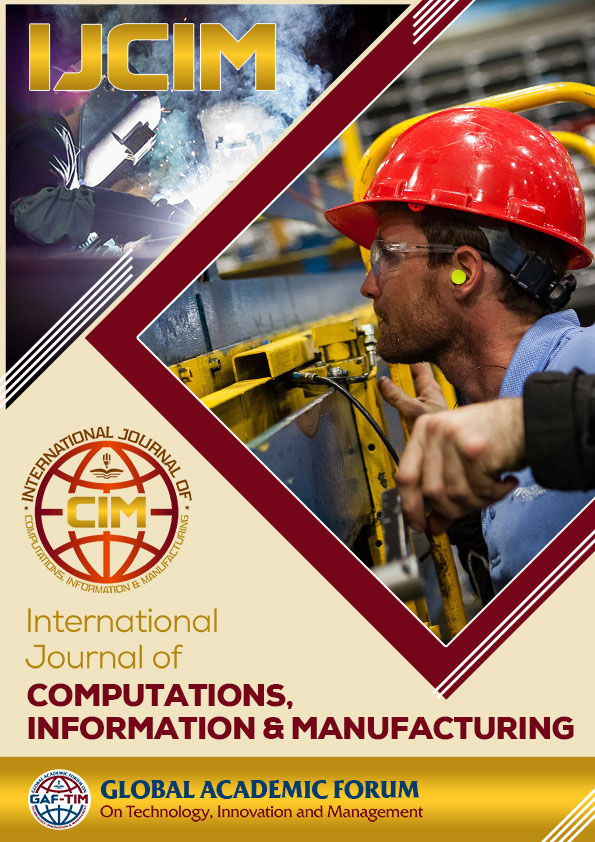Utilizing Machine Learning for Predicting Software Faults Through Selenium Testing Tool
DOI:
https://doi.org/10.54489/ijcim.v3i2.309Keywords:
Machine Learning, Testing, Automation Testing, quality assuranceAbstract
Software quality assurance, especially in the context of the testing phase, plays a pivotal role in ensuring the reliability and functionality of software systems. Automation testing is recognized as a valuable technique to enhance test coverage and accuracy. However, challenges such as diverse automation tools and unrealistic expectations can hold up its effectiveness. This research explores the integration of machine learning into the Selenium automation testing tool to predict faults based on UI and historical scenarios. The study aims to investigate the impact of machine learning on perceived task difficulty and time required for fault prediction during software testing. The literature review emphasizes the importance of software testing, automation testing, and the Selenium tool. The research methodology employs a mixed-methods approach, combining quantitative and qualitative analyses. The results show positive perceptions regarding the clarity of implementing machine learning-based Selenium but mixed opinions on the ease of implementation. The ML-based Selenium tool demonstrates increased effectiveness, reliability, and reduced testing duration. Interviews highlight the complementary roles of manual and automated testing. The discussion addresses improved test effectiveness, reliability, challenges, and future considerations, affirming the viability and advantages of incorporating machine learning into the Selenium framework for automation testing.References
Chen, T.Y. et al. 1998. Metamorphic Testing: A New Approach for Generating Next Test Cases.
Florea, R. and Stray, V. 2019. The skills that employers look for in software testers. Software Quality Journal. 27, 4 (Dec. 2019), 1449–1479.
DOI:https://doi.org/10.1007/s11219-019-09462-5.
Florea, R. and Stray, V. 2019. The skills that employers look for in software testers. Software Quality Journal. 27, 4 (Dec. 2019), 1449–1479.
DOI:https://doi.org/10.1007/s11219-019-09462-5.
Gamido, H. V. and Gamido, M. V. 2019. Comparative review of the features of automated software testing tools. International Journal of Electrical and Computer
Engineering. 9, 5 (Oct. 2019), 4473–4478. DOI:https://doi.org/10.11591/ijece.v9i5.pp4473- 4478.
Honest, N. 2019. Role of Testing in Software Development Life Cycle. International Journal of Computer Sciences and Engineering. 7, 5 (May 2019), 886–889. DOI:https://doi.org/10.26438/ijcse/v7i5.886889.
Jaganeshwari, K. and Djodilatchoumy, D.S. 2022. AN AUTOMATED TESTING TOOL BASED ON GRAPHICAL USER INTERFACE WITH EXPLORATORY BEHAVIOURAL
ANALYSIS. Journal of Theoretical and Applied Information Technology. 100, (2022), 22.
Kaur, M. and Kumari, R. 2011. Comparative Study of Automated Testing Tools: TestComplete and QuickTest Pro.
Kufel, J. et al. 2023. What Is Machine Learning, Artificial Neural Networks and Deep Learning?—Examples of Practical Applications in Medicine. Diagnostics. Multidisciplinary Digital Publishing Institute (MDPI).
Li, Z. et al. 2018. Progress on approaches to software defect prediction. IET Software. Institution of Engineering and Technology.
Malhotra, R. 2015. A systematic review of machine learning techniques for software fault prediction. Applied Soft Computing. (2015).
Marijan, D. and Gotlieb, A. 2020. Software Testing for Machine Learning. Proceedings of the AAAI Conference on Artificial Intelligence. 34, 09 (Apr. 2020), 13576–13582. DOI:https://doi.org/10.1609/aaai.v34i09.7084.
Mobaraya, F. and Ali, S. 2019. Technical Analysis of Selenium and Cypress as Functional Automation Framework for Modern Web Application Testing. (Dec. 2019), 27–46.
Noorian, M. et al. 2018. Machine Learning-based Software Testing: Towards a Classification Framework.
Nyamathulla, S. et al. 2021. A Review on Selenium Web Driver with Python.
Okezie, F. et al. 2019. A Critical Analysis of Software Testing Tools. Journal of Physics: Conference Series (Dec. 2019). Pandey, S.K. et al. 2021. Machine learning based methods for software fault prediction: A survey. Expert Systems with
Applications. Elsevier Ltd.
Phuc Nguyen, D. and Maag, S. 2020. Codeless web testing using Selenium and machine learning. (2020), 10. DOI:https://doi.org/10.5220/0009885400510060ï.
R. M. Sharma 2014. Quantitative Analysis of Automation and Manual Testing. (2014).
Rafael Lenz, A. et al. 2013. Linking software testing results with a machine learning approach. Engineering Applications of Artificial Intelligence. 26, 5–6 (May 2013), 1631–
DOI:https://doi.org/10.1016/j.engappai.2013.01.008. Seralina, N. 2021. INFORMATION SYSTEMS FOR MACHINE
INTELLIGENCE TO AUTOMATED SOFTWARE TESTING.
Herald of Kazakh-British technical university. 18, 1 (Mar. 2021), 157–161.
DOI:https://doi.org/10.55452/1998-6688-2021-18-1- 157-161.
Spicer, J. and Sanborn, A.N. 2019. What does the mind learn? A comparison of human and machine learning representations.
Sugali, K. et al. 2021. Software Testing: Issues and Challenges of Artificial Intelligence & Machine Learning.
International Journal of Artificial Intelligence & Applications. 12, 1 (Jan. 2021), 101–112. DOI:https://doi.org/10.5121/ijaia.2021.12107.
Wardhan, H. and Madan, S. 2376. STUDY ON FUNCTIONING OF
SELENIUM TESTING TOOL. 2023. Certified Tester Foundation Level Syllabus v4.0 International Software Testing Qualifications Board.











